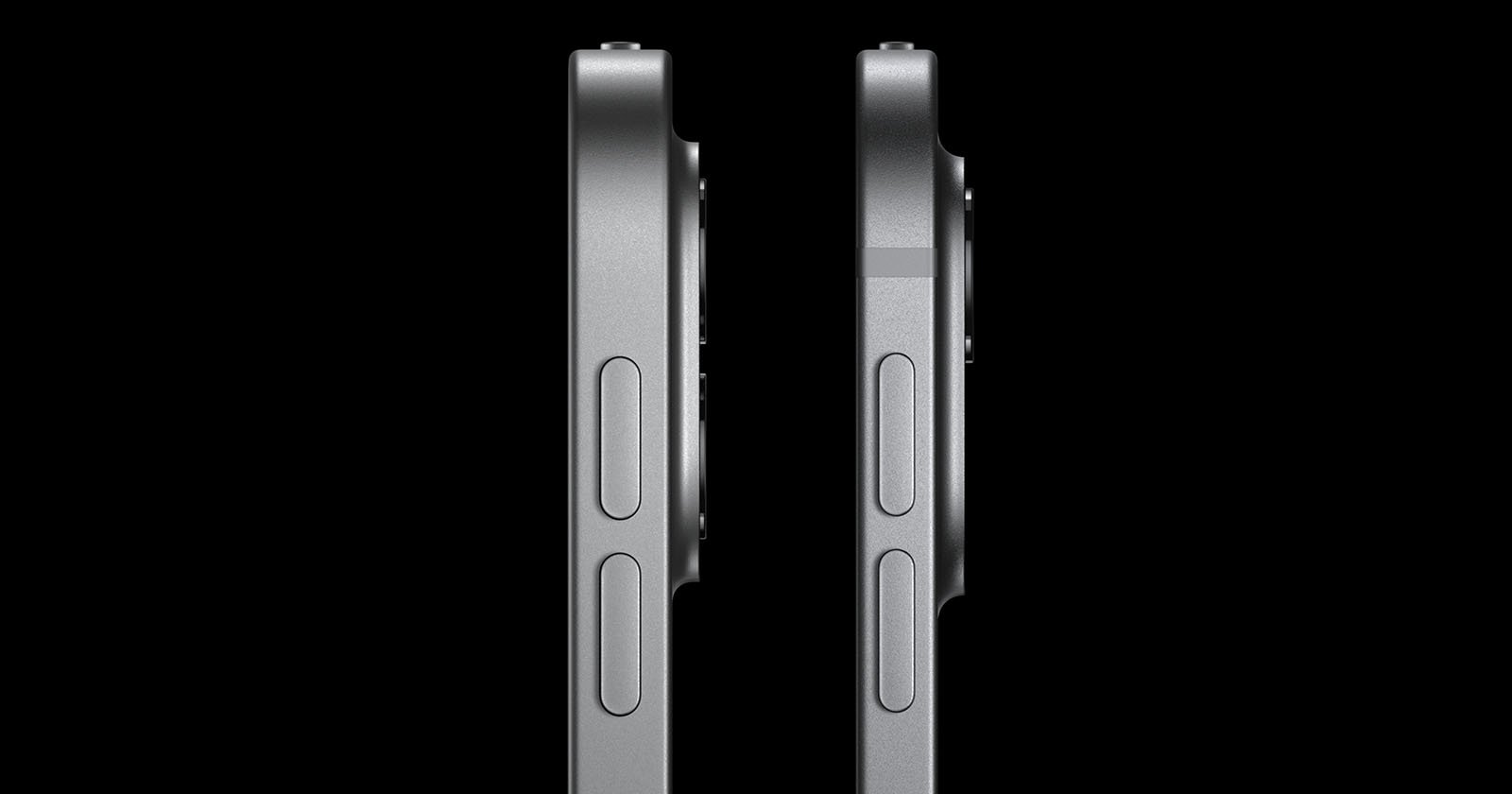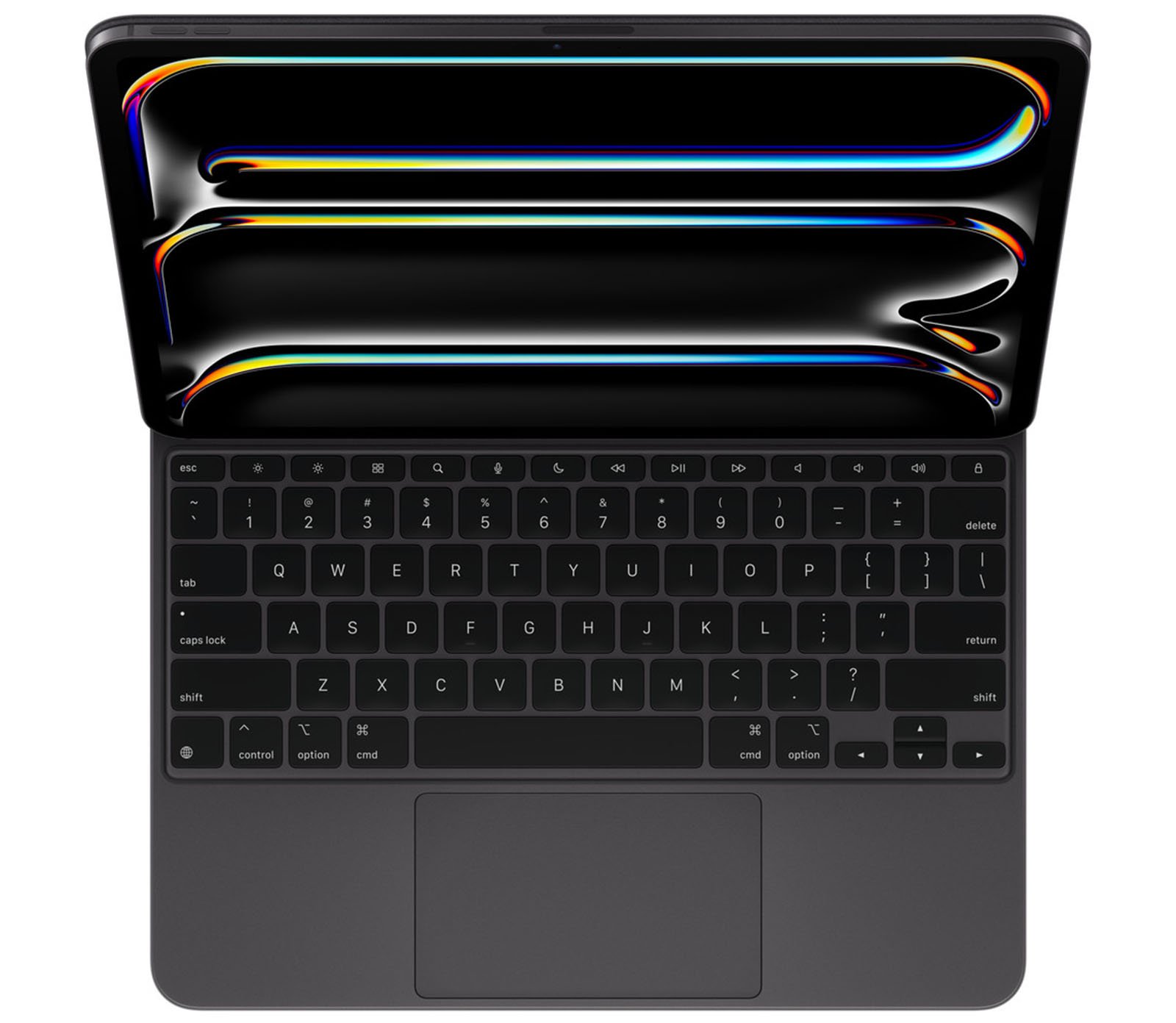New iPad Pro Features Breakthrough OLED, New Chip, and Thinner Chassis
![]()
After much anticipation and rumors, Apple has finally unveiled its redesigned iPad Pro tablets. These tablets feature the largest OLED display Apple has ever used, the company’s newest silicon chips, and a sleek new form factor. There’s a lot to like here for photographers and videographers on the go.
“We’re not going to just push the limits of what you can do on iPad, we’re going to crush them,” Apple promises.
Extremely Thin Design
The iPad Pro sports a new design, display, improved performance, and revised accessories. The new iPad Pro still comes in 11- and 13-inch models, although the new 13-inch version is Apple’s thinnest product ever. Yes, ever — even thinner than the old iPod Nano.

The 11-inch iPad Pro is just 5.3 millimeters thick, while the 13-inch model is even thinner at 5.1 millimeters.
The 11-inch iPad Pro weighs just 0.98 pounds, while the larger 13-inch model is a mere 1.28 pounds, which is about a quarter of a pound lighter than the prior 12.9-inch iPad Pro. The devices are also constructed using 100% recycled aluminum and come in silver and “Space Black” finishes.
Beautiful OLED Display With Perfect Black Levels and Better Colors
Apple has finally embraced OLED technology for iPad Pro to deliver inky black levels. However, OLED displays can be a bit limited in terms of peak brightness, at least in a small form factor like a tablet. So Apple has combined two OLED panels, dubbed Tandem OLED, to achieve higher brightness.
There are presumably other reasons apple has gone this approach beyond achieving a higher peak brightness, including achieving the desired image quality and power efficiency in a thin panel. While there have been rumors of tandem OLED technology for a while, it seems Apple is the first to bring the solution to market — assuredly with the help of one of its typical display partners.
![]()
![]()
Despite rumors to the contrary, the “Ultra Retina XDR” display is available on both iPad Pro models. It offers a peak brightness of 1,600 nits while maintaining truly perfect black levels. Full-screen peak brightness is capped at 1,000 nits. In either case, there is some serious contrast, which Apple says will be incredible for HDR photos and videos.
![]()
For pros requiring matte displays and more consistent color performance in different lighting conditions, Apple is bringing its Nano-texture etched glass to iPad Pro for the first time. This glass ensures minimal reflections when working in bright environments, which should be a welcome addition to photo and video editors and artists.
However, the Nano-texture option is only available on iPad Pro models with at least 1TB of storage. Plus, the upgraded display is an extra $100 anyways, so the price is getting pretty high here.
Regardless of the size or display type chosen, Apple says its new iPad Pro models feature the company’s most advanced display technology ever — not just for iPad, but for anything Apple has made.
![]()
Apple Debuts M4 Silicon for the iPad Pro
The new iPad Pro also gets a brand-new Apple chip: the M4. This is the first time Apple has debuted new silicon in a tablet, so the iPad Pro has gone from M2 to M4.
Thanks to the jump from M2 to the new M4, the new iPad Pro is up to four times faster than the prior generation. These new chips are great for another exciting announcement for creators — Final Cut Pro 2, more on that soon.
![]()
The M4 offers up to a 10-core CPU and a 10-core GPU. It sports three-nanometer technology and over 28 billion transistors. The M4 supports dynamic caching, hardware-accelerated ray tracing, 120GB/s memory bandwidth, and more.
Given that Apple is all-in on AI these days, it should come as no surprise the M4 has some Neural Engine improvements, too. It is faster and more efficient than prior Neural Engine iterations and has a 16-core design.
![]()
While top-end performance gains are exciting for power users, efficiency matters more for some tasks. Apple says that the M4 can deliver the same power output as the M2 using half the power, which should be a boon for battery life.
New Cameras
The iPad has never been particularly adept at taking photos and videos. Apple hopes to change that with a new 12-megapixel rear camera that shoots 4K ProRes video via an f/1.8 lens.
![]()
![]()
A new front-facing TrueDepth camera has also moved from the top to the side, ensuring that it works better when the iPad Pro is used in landscape mode.
Although there are new cameras on the new iPad Pro, there are also some omissions. The last-generation iPad Pro sported a 10-megapixel ultra-wide camera — that is not present on the new iPad Pro. Apple has gone back to the single rear-camera setup of much older iPad Pro models.
USB-C Port with Thunderbolt 3 and USB 4 Support
The new iPad Pro supports speeds up to 40GB/s via its USB-C connector, meaning it can connect to an extensive array of external devices, including Apple’s Pro Display XDR at its full 6K resolution.
![]()
iPad Pro also supports Wi-Fi 6E; the Wi-Fi + Cellular version supports 5G with eSIM. However, it is worth noting that the previous iPad Pro with cellular had a physical SIM card slot. Further, mmWave support has been removed in the new iPad Pro, although Apple has not yet explained why.
Apple Brings a Real Keyboard to iPad Pro
While the previous Magic Keyboard is fine, it lacks some critical features for power users, including function keys. The new Magic Keyboard is thinner and lighter while delivering direct access to functions like volume and brightness — much like a MacBook Pro keyboard.

It includes a refined, larger trackpad and an aluminum palm rest. The Magic Keyboard’s trackpad also offers haptic feedback, and the device has a USB-C port on its machined aluminum hinge. The port isn’t new, but the hinge design is.
Unsurprisingly, the Magic Keyboard isn’t cheap. The 11-inch version is $299, while the 13-inch version is $349. Both will ship next week alongside the new iPad Pro.
Apple Pencil Pro
Many artists like an iPad and Apple Pencil combo, and that is true of the iPad Pro series as well. The new iPad Pro works with Apple’s new Pencil Pro.
The new Pencil is taller, has USB-C, supports Find My for the first time, and promises improved accuracy and gesture support. Users can squeeze, double-tap, or snap using the Pencil Pro. Rotating the barrel changes pen and brush shapes in supported apps and supports hover functionality. It will be interesting to see if photo or video editing apps fully utilize these new functions.

The Apple Pencil Pro is $129 and ships next week.
What Apple Says About its New iPad Pro Tablets
“iPad Pro empowers a broad set of pros and is perfect for anyone who wants the ultimate iPad experience — with its combination of the world’s best displays, extraordinary performance of our latest M-series chips, and advanced accessories — all in a portable design. Today, we’re taking it even further with the new, stunningly thin and light iPad Pro, our biggest update ever to iPad Pro,” says John Ternus, Apple’s senior vice president of Hardware Engineering. “With the breakthrough Ultra Retina XDR display, the next-level performance of M4, incredible AI capabilities, and support for the all-new Apple Pencil Pro and Magic Keyboard, there’s no device like the new iPad Pro.”
And what says PetaPixel? Apple’s event will be a hot topic on this week’s podcast, so be sure to tune in to hear what photographers and video editors think about the new device.
Pricing and Availability
The 11-inch iPad Pro starts at $999, while the 13-inch version costs $1,299. The base models include 256GB of storage, with 512GB, 1TB, and 2TB options, pushing the price up to $1,999 and $2,299, respectively. The Nano-texture glass, available only on 1TB and 2TB models, adds $100 to the total price. Opting for a cellular model adds $200.
This means that without accessories or a case, the most expensive iPad Pro in Apple’s lineup is $2,599.
The new iPad Pro is available to order now, and shipping starts next week.
Image credits: Apple